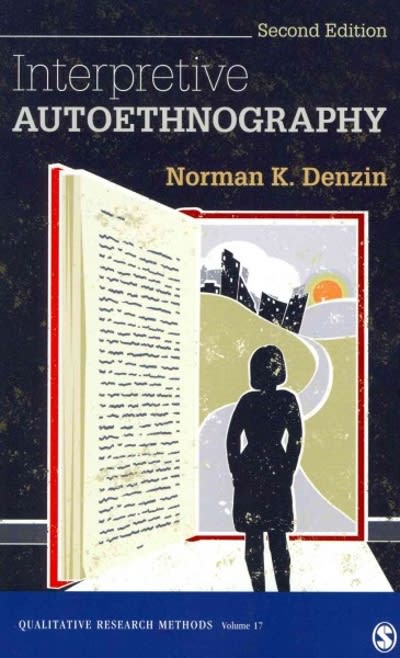Question
1. There are many different reasons for undertaking research. Complete the table below by writing the letter in the answer column that matches the description
1. There are many different reasons for undertaking research. Complete the table below by writing the letter in the answer column that matches the description to the reason
| Description | Answer | Reason |
|---|---|---|
| Used to establish whether a research hypothesis extends beyond those examined in a single study, and if it can be duplicated in a similar situation and get the same result. | Making a comparison | |
| A mechanism to self-manage professional development. | Testing a hypothesis | |
| Research where two cases are similar in some respects but differ in other respects. The differences become the focus of examination. | Identifying a trend | |
| Refers to use of evidenced based research to inform the direction that client/patient service provision follows. | Extending your own knowledge | |
| The practice of collecting and analysing information, and then attempting to spot a trend or pattern. | Strengthening the quality of your own practice |
2. Providetwo (2) sources of information that are leading sources of evidenced based practice information in your area of employment (or intended employment) in this sector.
| Answer choices |
|---|
| 1. |
| 2. |
3. What are the rules of evidence in principles and models of evidence-based practice?
Select four
| Answer choices | Select the correct answer/s |
|---|---|
| Validity | |
| Flexibility | |
| Authenticity | |
| Reliability | |
| Currency | |
| Sufficiency |
4. Why is duty of care important in the application for evidence based practice? Select two .
| Answer choices | Select the correct answer/s |
|---|---|
| Everyone has to practice this way | |
| It is associated with better health outcomes | |
| There are zero risks associated with best practice | |
| It prevents bad practice | |
| It is current and has been tested |
5. Complete the table below by writing the letter in the answer column that matches the principle/model to the correct description.
| Description | Answer | Principle/model |
| Analyses existing data to improve processes and/or outcomes. | Evidence-based practice | |
| Uses qualitative or quantitative methods to develop new knowledge or validate and refine existing data. | Continuous qualityimprovement | |
| Analysis and application of existing data and literature to clinical practice. | Research |
6. What are some of the ways you can evaluate the validity of an information source? Select four
| Answer choices | Select the correct answer/s |
|---|---|
| Check the author's credentials | |
| Check the publication's credentials | |
| Check the length of the article | |
| Review the article's contents | |
| Check the age of the author | |
| Check for any possible bias |
7. Number the first six steps in the research process in the correct order, 1 being the first action to take.
| Step | Order |
|---|---|
| Undertake a literature review | |
| Establish a theoretical or conceptual framework | |
| Identify the purpose of the research problem | |
| Develop a hypothesis/research questions | |
| Choose a research problem |
8. What are some cultural and ethical considerations for conducting research? Select four .
| Answer choices | Select the correct answer/s |
|---|---|
| Risks to research participants must be minimised | |
| Full consent must be obtained from the participants | |
| The participants must have similar hobbies | |
| Protection of the privacy of the participants must be ensured | |
| It is ok to only select friends as participants | |
| The unique characteristics of cultural groups must be understood |
9. Research uses a number of processes to analyse information. Complete the table below by writing the letter in the answer column that matches the research process to the correct description.
| Description | Answer | Process |
|---|---|---|
| A more robust mechanism than relying on one discipline alone as there is a greater depth of data and breadth of professional input in the conclusion. | Comparing | |
| Refers to disputing an apparent fact. This can be undertaken by citing an alternative explanation for the result, or a contradictory study. | Contrasting | |
| The act of checking the similarities between two or more things in order to learn something about one or all of the things. | Challenging | |
| Refers to variables that appear to be influential but in reality are caused by some other factor. For example, there is a correlation between warm weather and crime. The apparent fact is that heat influences crime. The alternative explanation is that the population goes out more when the weather is warm. | Reflecting | |
| The process of contemplation of research and what has been learned. This may include recognising the achievements and challenges still to be faced. | Distinguishing relevant from irrelevant | |
| The act of checking the differences between two or more things or groups of data in order to learn something about one or all of the things. | Drawing interdisciplinary connections |
Step by Step Solution
There are 3 Steps involved in it
Step: 1

Get Instant Access to Expert-Tailored Solutions
See step-by-step solutions with expert insights and AI powered tools for academic success
Step: 2

Step: 3

Ace Your Homework with AI
Get the answers you need in no time with our AI-driven, step-by-step assistance
Get Started


